The MNIR collection [Muzeul Național de Istorie a României]
In the vicinity of Cluj, ancient Napoca, there were discovered two princely tombs dated to the second half of the 5th century. It is believed that both reach burials belong to Gepids, an East Germanic tribe.
“The ensembles surprise both by the wealth and absolutely spectacular diversity of the preserved inventories, as well as by the concentration of symbolic value that they store. In the first tomb from Apahida, the fibula with onion-shaped buttons, a badge worn only by a small group of officials of the Roman Empire, tells us about the special status of the deceased; the name ring – OMAHARUS – can also be interpreted as an attribute of the wearer’s inherited status, and the signet ring suggests the involvement in the culture of the written document and the responsibility of the seal. The placement of silver cups decorated with Bacchus scenes – large capacity vessels, intended for storing wine and pouring it into smaller containers – refers to a whole behavior revealing not only the consumption of wine, a custom typical of the ancient Mediterranean area, but also the participation in the banquet from the position privileged of the one who offered and focused on himself the attention of the guests. The bracelet with thickened ends suggests another way of characterizing the same personality, by referring, this time, to a value system specific to one of the “barbarian” worlds that evolved beyond the limits of the Empire. In the second princely tomb from Apahida, among the belt accessories, the small bag, ornamented with appliques with horse heads, is the easternmost appearance of a type of piece characteristic of the Merovingian space, its presence can also be interpreted as an indication of the existence of direct relations or connections with Western Europe. The presence of the set of game pieces suggests a certain willingness to socialize and thus contributes to sketching a certain behavioral profile. On the other hand, the deposition of harness accessories, from one or more horses, is another way of suggesting high status. The presence in both complexes of Apahida of glass vessels repaired with gold leaf may suggest the existence of contacts with the Scandinavian area, where several occurrences of this custom are recorded. The technical and stylistic similarities between the various belt accessories preserved in the recovered inventories, all ornamented by using a special variant of cloisonné, which surprises with the perfection of the execution, could indicate their origin from the same workshop or technological environment.” [https://muzeulvirtual.ro]
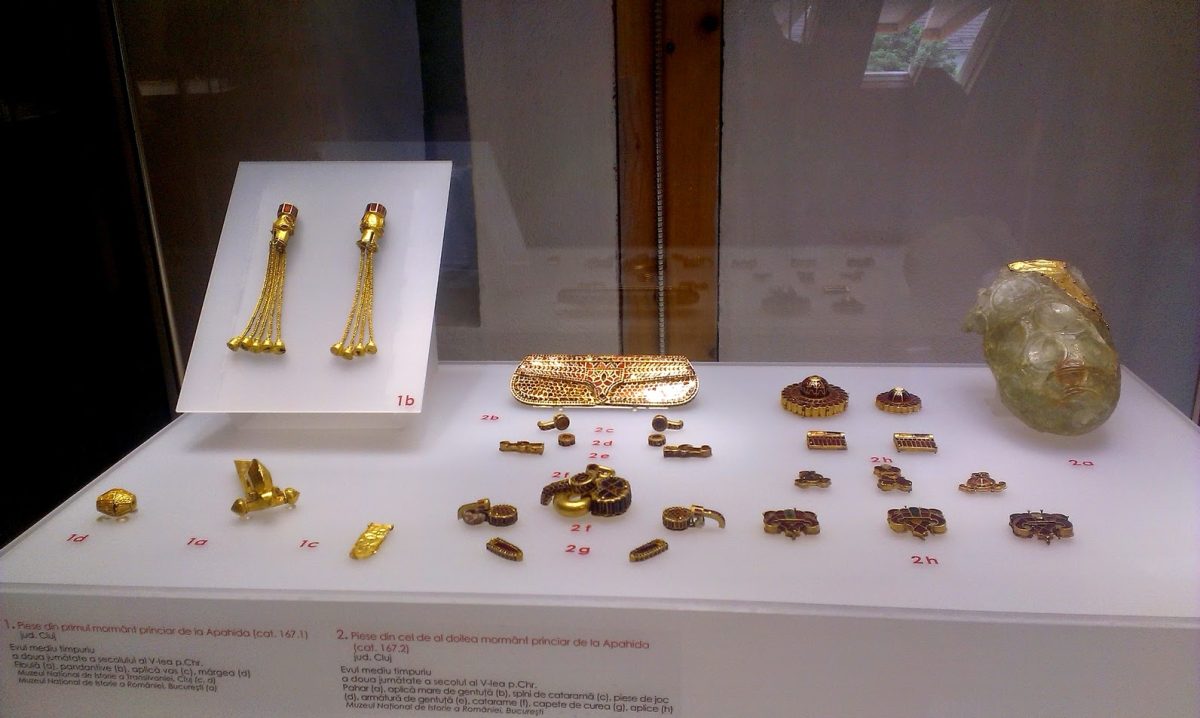
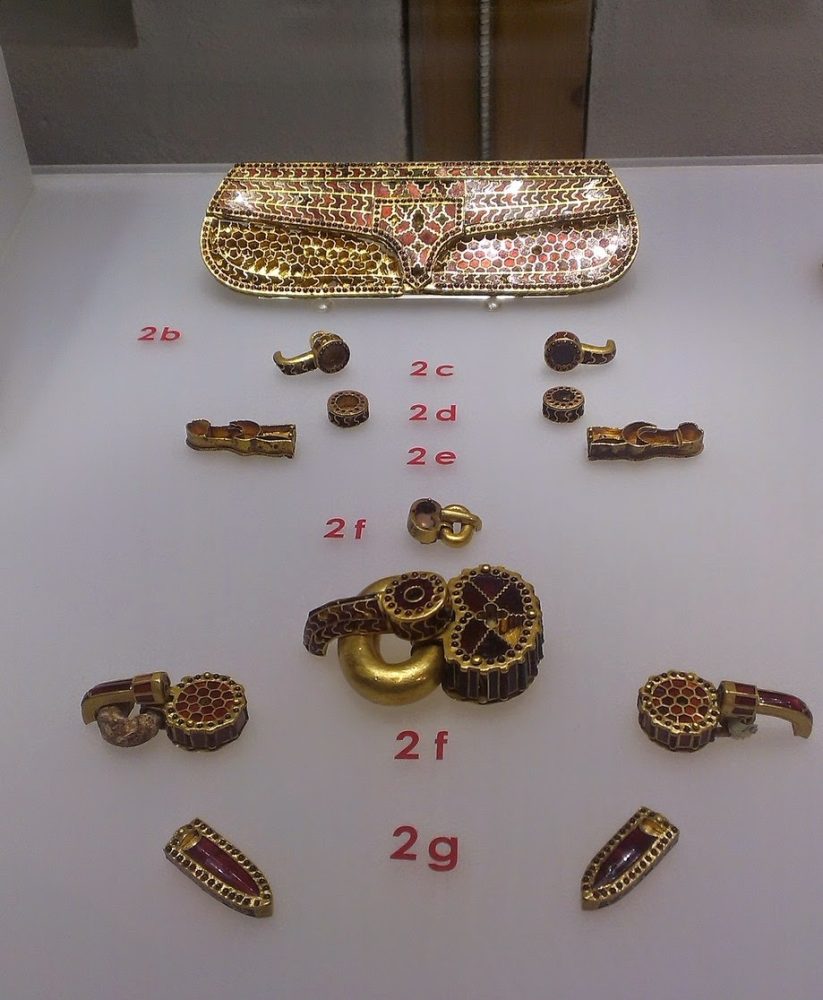
Glass vessel from Apahida, grave II, is this glass beaker produced in the Late Roman Empire, and repaired with a sheet of gold (height 17,5 cm).
“It is one of the richest migration period graves, and relatively near to the Danube frontier, so this repair in itself was of some value in that it was relatively easy to obtain a new intact glass beaker, indicating that this particular piece of glass must be of high importance as an “object of memory”.
[D. Quast]
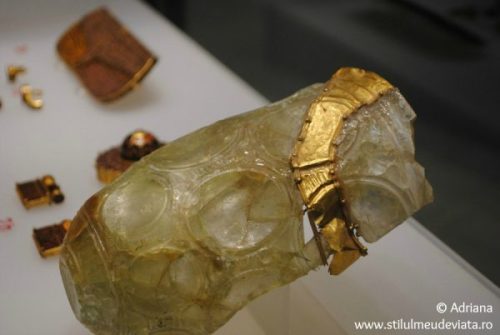
A narrow vessel with a conical body, slightly expanding upwards, is decorated with large round concave medallions. The glass is colorless, slightly translucent.
The photo shows that a strip of gold sheet was pressed onto the undamaged part of the vessel to pick up the pattern, then fixed on the damage with two strips of gold used as a frame and rivets passing through them. If I understand correctly, a smooth piece of gold sheet was inserted in the middle of the vessel, also reinforced with gold stripes, and the rivets connect the two sheets together, covering the defect on both sides of the vessel.


SOURCES
- Tezaurul de la Apahida https://muzeulvirtual.ro/imagini/tezaurul-de-la-apahida
- Dieter Quast, SYMBOLIC TREASURES IN BARBARIAN BURIALS (3RD-7TH CENTURY AD) https://www.academia.edu
PICTURES
- Photo ©Adriana https://www.stilulmeudeviata.ro
- Pictures by Richard M. Ilie http://www.richietm.com/2014/05/aurul-si-argintul-antic-al-romaniei.html



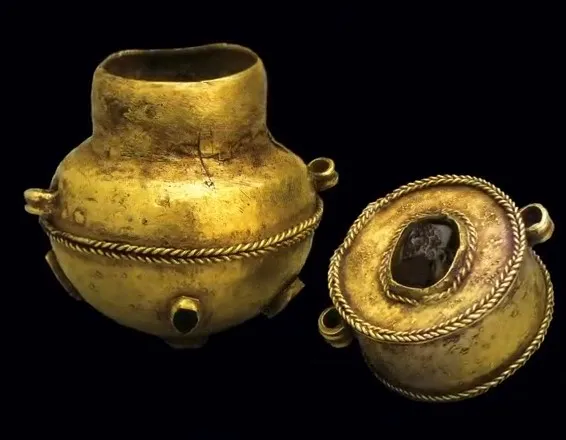
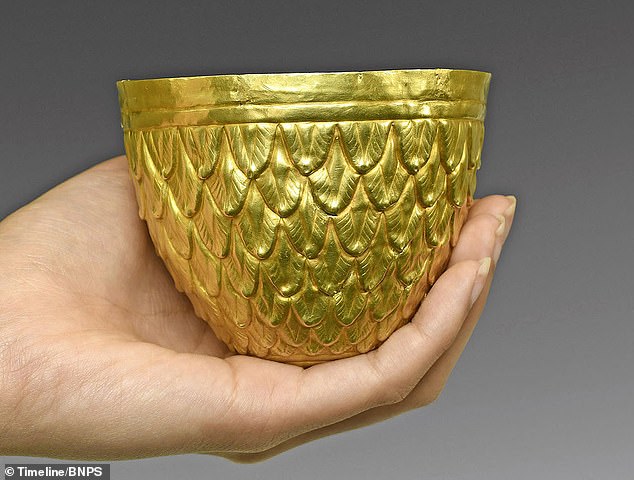

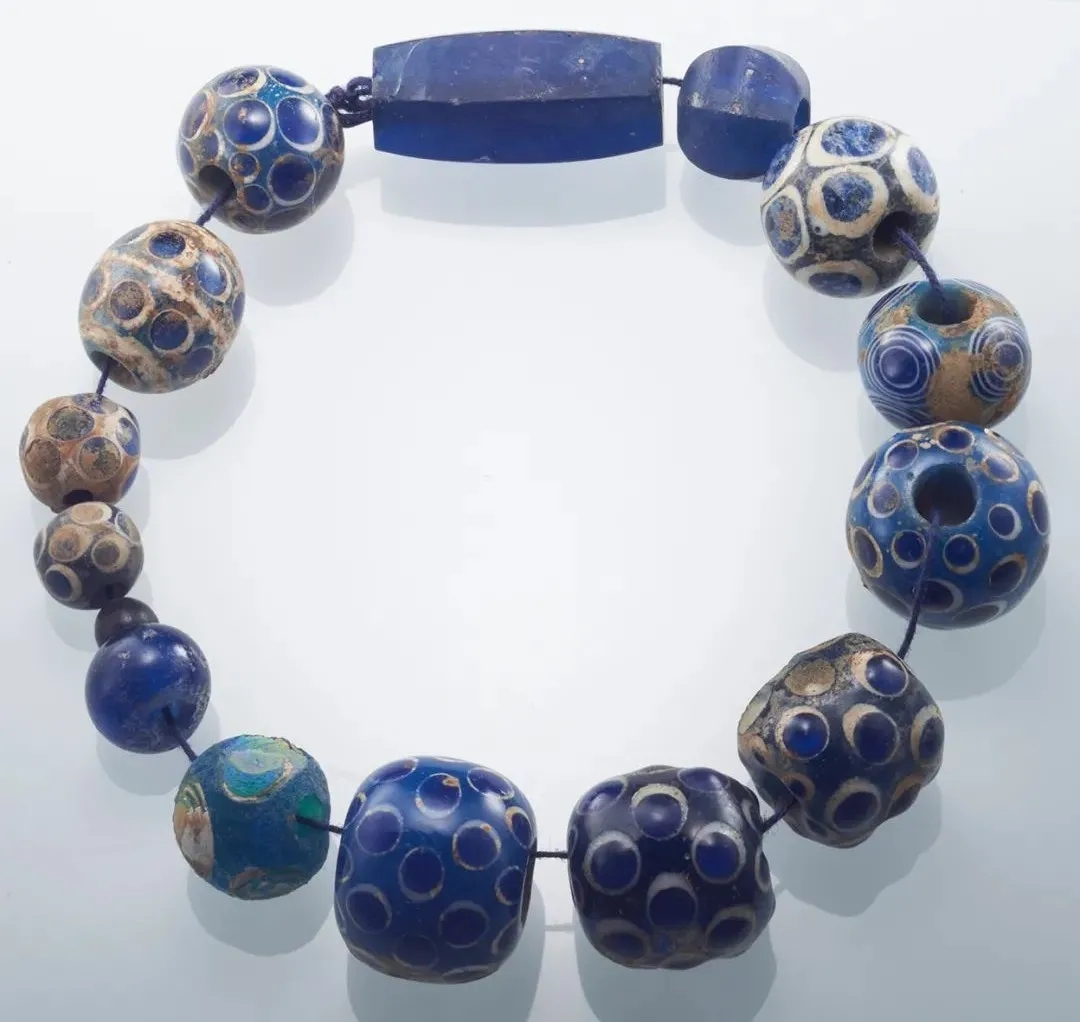
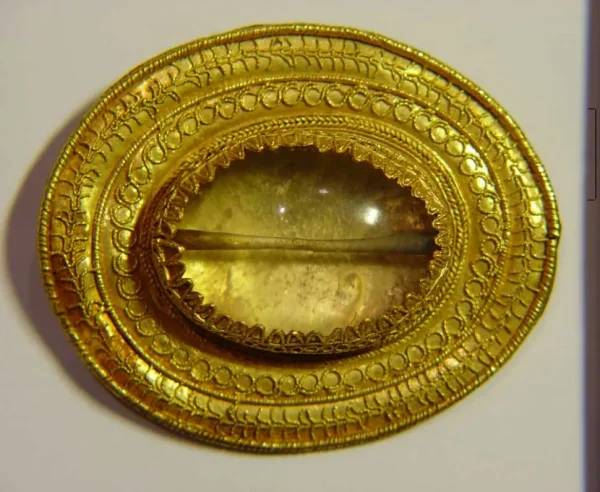
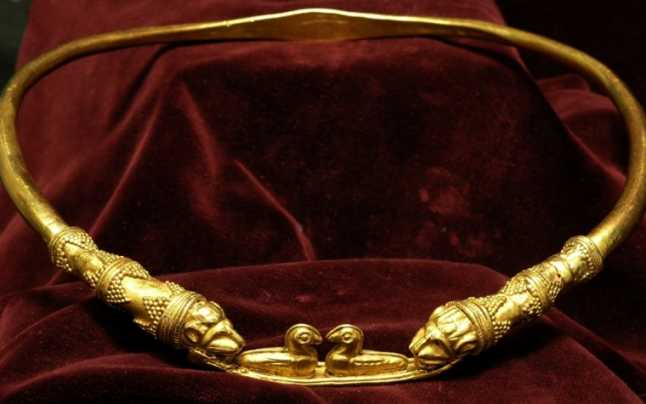
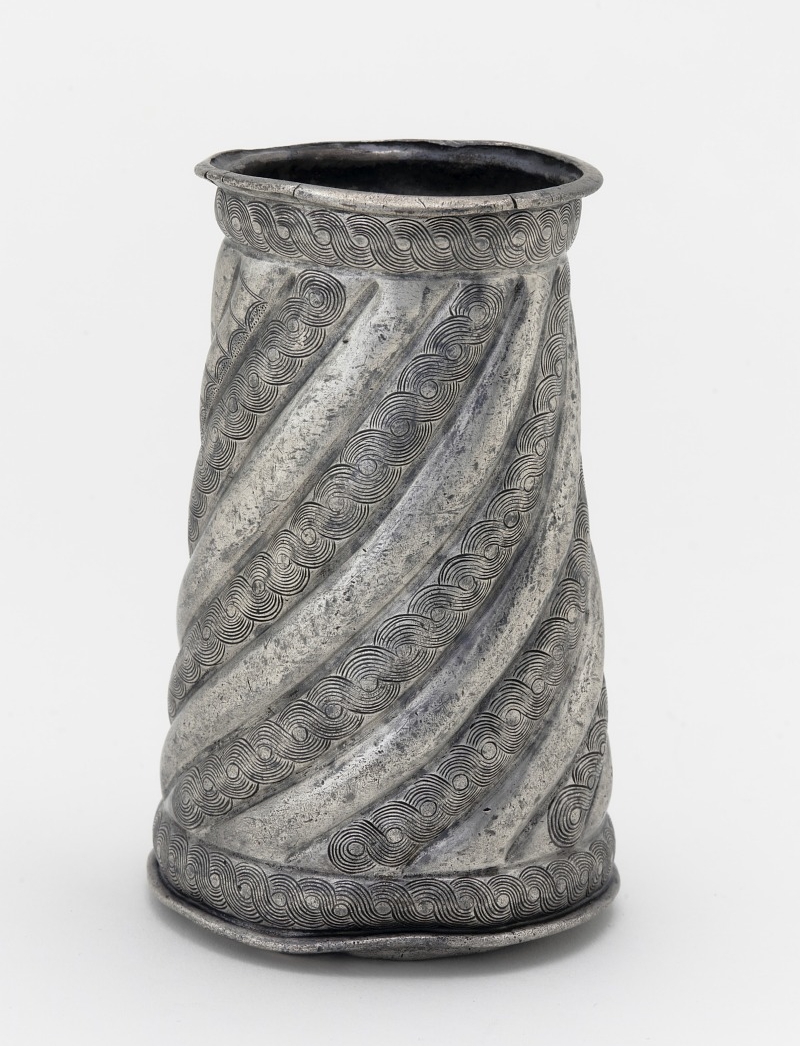



Pingback: Was Kintsugi in Cluj before Japan? – Hey Cluj